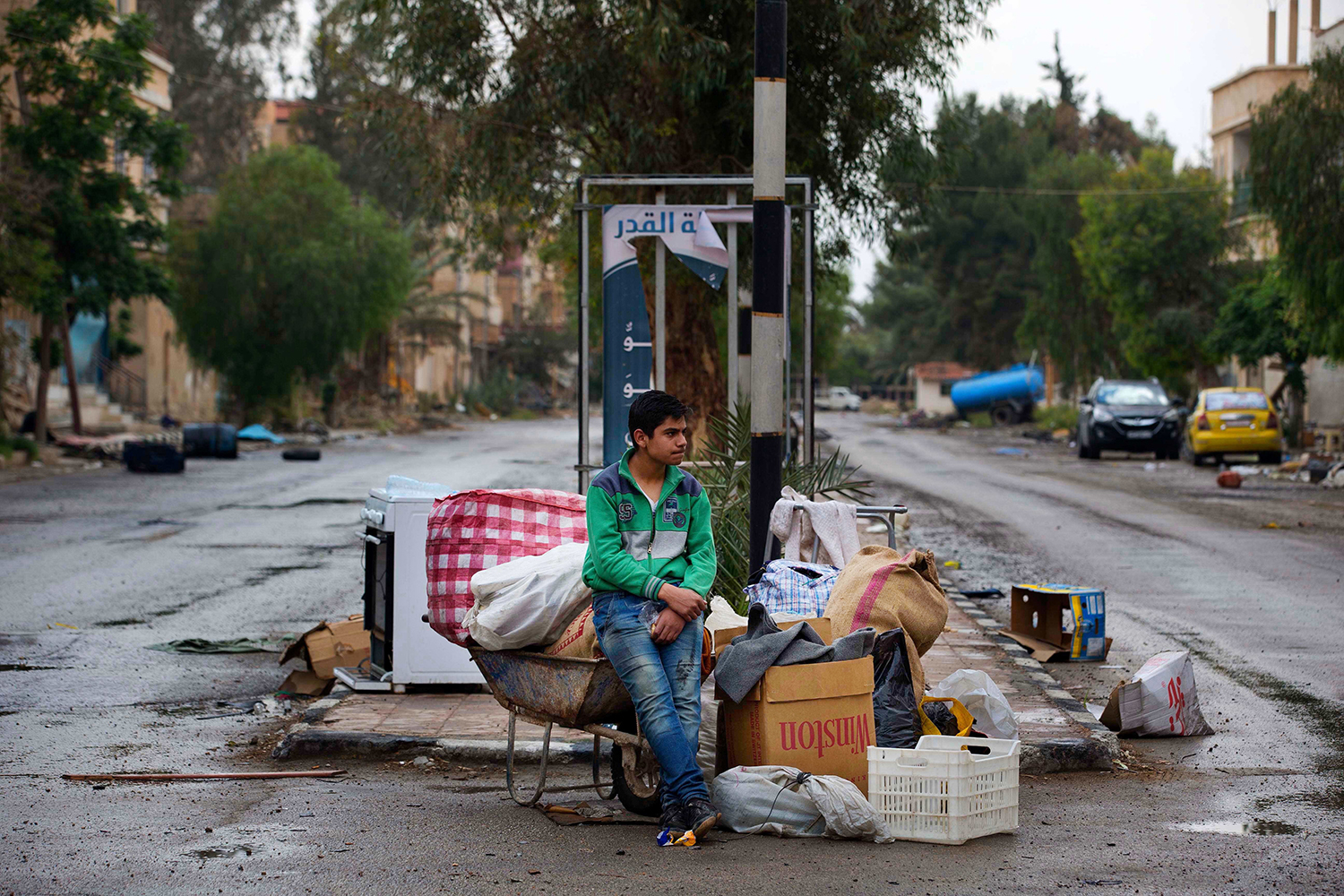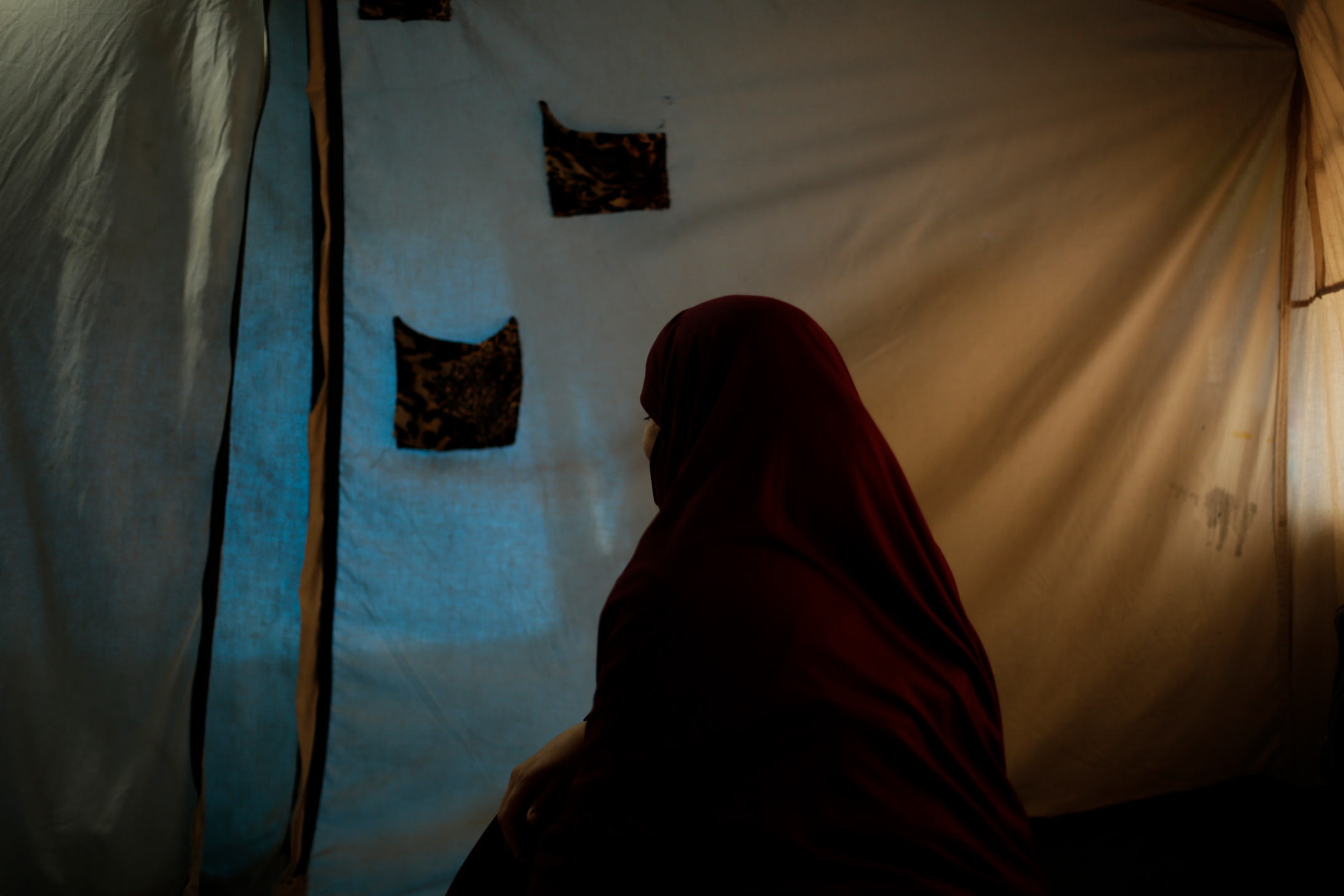Inside Kobani

From a small, backwater tucked in northern Syria, the Kurdish town of Kobani was thrown onto the world stage in September when Islamic State militants stormed in and captured almost half the town, triggering a surge of tens of thousands of refugees.
Nearly three months of devastating fighting later, the Kurdish men and women of Kobani are still stubbornly defending the town, slowly clawing back territory from the militants on several fronts. Although far from over, the extremists' blunted drive to capture the town on the Turkish broder has come to symbolize their limits as they fight enemies on multiple fronts in both Iraq and Syria.
The Kurdish fighters of Kobani have been aided by U.S. airstrikes hitting militants in and around the town — more than 310 since mid-September — and a group of Kurdish peshmerga forces from Iraq who came to Kobani with more advanced weapons. A second battalion of peshmerga forces crossed into Kobani this week, replacing the first wave.
Perhaps in an attempt to cut its losses, IS appears to be shifting its attention away from Kobani, launching a major attack this week on a key military air base in eastern Syria.
An exclusive series of reports shot by videojournalist Jake Simkin, who spent a week inside Kobani late last month, offered a rare, in-depth glimpse of the horrendous destruction inflicted on the town and the lives of the fighters and civilians left behind.
Here's the series of stories:
INSIDE KOBANI: Devastation mixed with optimism
Blocks of low-rise buildings with hollow facades, shattered concrete, streets strewn with rubble and overturned, crumpled remains of cars and trucks. Such is the landscape in Kobani, where the sounds of rifle and mortar fire resonate all day long in fighting between Islamic State extremists and the Syrian town's Kurdish defenders.
Kurdish fighters peek through sand-bagged positions, firing at suspected militant positions. Female fighters in trenches move quickly behind sheets strung up to block the view of snipers. Foreign jets circle overhead.
The fighters, backed by small numbers of Iraqi peshmerga forces and Syrian rebels, are locked in what they see as an existential battle against the militants, who swept into their town in mid-September as part of a summer blitz after the Islamic State group overran large parts of Syria and neighboring Iraq.
Several fighters with the the People's Protection Units, or YPG, the main Kurdish fighting force, spoke confidently of a coming victory. Jamil Marzuka, a senior commander, said the fighting has "entered a new phase" in the last week.
"We can tell everyone, not just those on the front lines, that we are drawing up the necessary tactics and plans to liberate the city," he said.
A YPG fighter, who identified himself only by his first name, Pozul, said only small pockets of militants remain. Still, he said he and other fighters must remain wary as they move around because Islamic State snipers lurk amid the ruins and the militants have booby-trapped buildings they left behind.
"They are scattered so as to give us the impression that there are a lot of them, but there are not," he said.
The Kurds' claims of imminent victory may be overly ambitious. But the AP's reporting has found that the Islamic State group's drive has at least been blunted. Hundreds of militants have been killed, most of them by airstrikes.
On Friday, activists said IS militants withdrew from large parts of the so-called Kurdish security quarter, an eastern district where Kurdish militiamen maintain security buildings and offices. Militants had seized the area last month.
Zardasht Kobani, a 26-year-old YPG unit commander, has been fighting day and night for weeks. Often he and his fellow fighters were short on ammunition and sleep, he said. Now he feels an important victory is at hand. The battle of Kobani has had a crucial symbolism for both sides.
He said the militants have failed in Kobani and are looking for a way out.
"But IS knows that escaping from Kobani will spell their downfall," he said.
INSIDE KOBANI: Kurdish women on the frontline
On the front lines of the battle for Kobani, Kurdish female fighters have been playing a major role in helping defend the Syrian town from the onslaught by the Islamic State extremist group.
Pervin Kobani, the 19-year-old daughter of a farmer, is one of them.
She is part of a team holding an eastern front-line position that comes under regular attack from the extremist fighters, who have been trying to seize the town since mid-September.
The Islamic State group has declared a self-styled caliphate in areas under its control in Iraq and Syria, governing it according to its violent interpretation of Shariah law. The Kurdish men and women fighting in Kobani are determined not to lose the town to the extremists.
Pervin says she doesn't really have dreams beyond the present.
"We must save our love for Apo, and Kurdistan and our martyrs," she said, referring to Kurdish rebel leader Abdullah Ocalan, whose group has been fighting Turkey for Kurdish autonomy.
Nearby, one of Pervin's comrades saw something moving amid the destroyed remains of central Kobani and opened fire.
Pervin left home and took up arms two years ago as the overstretched forces of Syrian President Bashar Assad withdrew from Kurdish areas in northern Syria. She joined the Syrian Kurdish women's self-defense force, known by its Kurdish acronym YPJ. The female YPJ fighters are now integrated with the men's units, the YPG.
"I didn't really have any other ambitions. I just wanted to live a free life, as a woman, (to) be able to see our reality, and have our rights and just live," she said.
Aided by a small Iraqi Kurdish peshmerga force and Syrian rebels, they have been stubbornly defending the town since mid-September, aided by airstrikes by the U.S.-led coalition.
"We won't allow the terrorist groups in until the last drop of our blood," Pervin said.
After half a year serving away from her hometown, she returned with Kurdish forces two months ago to Kobani.
Most fighting happens at night. The fighters can only sleep during the day, with a rotating two-hour sentry watch.
Three weeks ago, Pervin bumped into her father on a street corner.
She was surprised to see him holding a gun. She didn't know that he too had decided to fight. Her mother is a refugee in Turkey, her only brother studying in Algeria.
"Honestly when I heard my father is fighting on the western front with the YPG I was so proud of him, and it made me want to fight more," she said.
Her father, Farouk Kobani, was delighted to see his daughter that day three weeks ago, after months without news.
Last week, videojournalist Simkin traveled with Pervin to the western front, to see her father once again.
She says he is now her comrade first — but she hugs him like a father anyway.
Text by AP news story, An exclusive look at life in Syrian town of Kobani.
Spotlight is the blog of AP Images, the world’s largest collection of historical and contemporary photos. AP Images provides instant access to AP’s iconic photos and adds new content every minute of every day from every corner of the world, making it an essential source of photos and graphics for professional image buyers and commercial customers. Whether your needs are for editorial, commercial, or personal use, AP Images has the content and the expert sales team to fulfill your image requirements. Visit apimages.com to learn more.
Written content on this site is not created by the editorial department of AP, unless otherwise noted.
AP Images on Twitter | AP Images on Facebook | AP Images on Google+
Visual artist and Journalist






















